Socomec Motor Controls and Drives
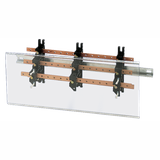
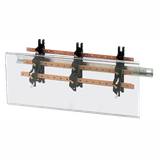

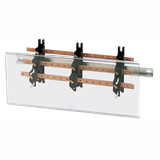
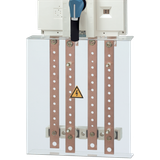
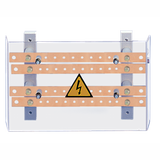
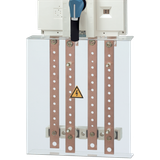



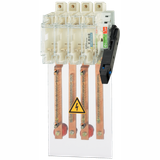

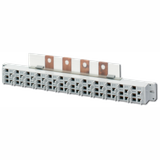
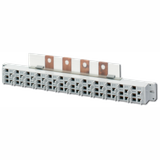
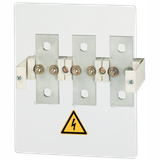
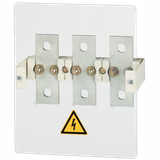
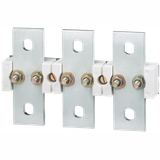
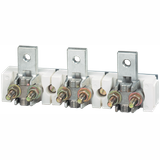
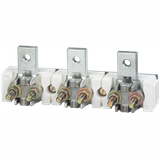

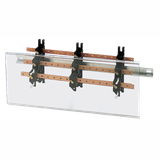

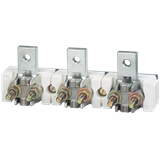
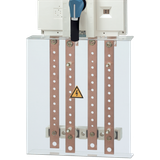
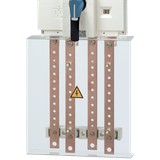




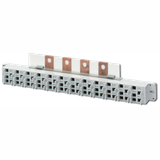


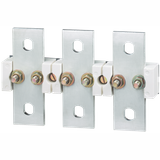
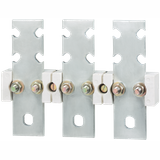


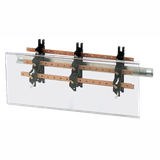

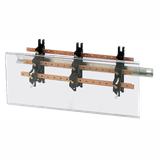
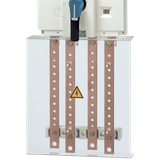
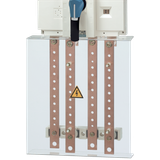
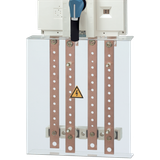













Socomec control gear in practical LV builds
Panels that sit beside UPS, ATyS, and drives need control hardware that behaves predictably under heat, harmonics, and frequent switching. Socomec focuses on crisp isolation, stable coil performance, and finger-safe terminations so commissioning isn’t derailed by nuisance chatter or cooked auxiliaries. Typical electrical windows: 230/400 V AC networks, 24 V DC and 110/230 V AC coils, utilisation categories up to AC-3/AC-4 for motors, and ambient −25…+55 °C with published derating for warm risers. Mechanical endurance on core frames often reaches multi-million operations; terminals accept fine-strand with ferrules and hold torque under vibration.
Socomec relays and contactors range map
Contactors from fractional-kilowatt up to 75–110 kW (400 V, AC-3) cover fans, pumps, and compressors; add clip-on thermal overloads (Class 10/20) for classic DOL starter stacks. Control relays and interposers bring galvanic isolation between PLC outputs and field loads; timer blocks (on-delay, off-delay, star-delta) slot directly onto the coil side. For heavier starts, soft starters with current-limit and ramp profiles protect gearboxes and reduce inrush on fragile feeders. Plug-in auxiliary contacts (1NO/1NC, 2NO/2NC) mirror state to BMS, while coil suppressors tame back-EMF where long DC runs would otherwise spike I/O cards.
Socomec control modules technical parameters and standards
Conformity anchors to IEC/EN 60947-4-1 (contactors/overloads), IEC/EN 60947-5-1 (control-circuit devices), and IEC/EN 60947-1 general rules. Rated insulation voltages typically hit 690 V; impulse withstand 6–8 kV keeps margin around switchboards. Short-circuit coordination with upstream protection is documented as Type 1/Type 2 per 60947-4-1; check Iq values and let-through limits when pairing with MCCBs or gG/aM fuses. Coils ship AC or DC with economy circuits; pick wide-range types where voltage stability isn’t guaranteed. EMC immunity follows the IEC 61000-4 series; dielectric tests and glow-wire on plastics are listed for cabinet integration. This is the level of data specifiers expect on socomec control modules so the starter stack and protective chain are predictable.
Where socomec electrical control systems fit
AHUs and chilled-water pumps want AC-3 contactors plus Class 10 overloads; conveyors and crushers benefit from soft-start to avoid belt shock; boiler plants prefer interposing relays to isolate BMS from burner circuits. For lift machine rooms and cranes, under-voltage releases and mechanical interlocks prevent unsafe reclosing. In data suites, latching relays drive changeover of non-critical fans without holding current. Hospitality and retail use compact DIN starters inside shallow boards—IP20 fronts and low heat loss matter where space is tight. Across these, socomec electrical control systems keep control power clean, status points consistent, and maintenance simple.
Integrating socomec switchgear components with UPS, metering, and protection
Place contactor stacks downstream of isolators and upstream of thermal-magnetic protection; respect heat-rise spacing near SPDs and busbars. DIRIS meters prefer short VT/CT runs—route control wiring away from magnetic loops and VFD outputs. For ATS rooms, interlock logic must account for generator warm-up and undervoltage; auxiliary contacts feed permissives to the transfer controller. When PLCs share enclosures, segregate I/O and motor feeders; shield terminations with 360° clamps at the entry plate. This is also where socomec switchgear components—handles, interlocks, auxiliary blocks—save panel depth and keep the door kit aligned with the device pitch.
Selection notes for B2B — sizing socomec motor control gear
Start from the motor plate and supply quality.
- Duty and category: AC-3 for standard squirrel-cage starts; AC-4 where inching/jogging is real—then oversize contactors and review thermal cycles.
- Coordination: demand documented Type 2 with the chosen MCCB/fuse; match Icu/Ics and the contactor’s Iq so a fault doesn’t weld contacts.
- Overload setting: choose Class 10 for pumps/fans; Class 20 for high-inertia machinery.
- Coil control: DC coils with suppressors for PLC outputs; AC coils with wide-range tolerance where feeders sag during starts.
- Environment: verify −25…+55 °C and altitude; keep headroom if the starter sits above warm UPS frames.
- Footprint and service: select front-changeable auxiliaries and test levers for quick FAT/SAT.
When the schedule names socomec motor control gear, lock starter frame, overload class, and upstream protective device on the drawings so workshop and site teams aren’t guessing.
Autmation-adjacent building blocks
Where PLC density is high, interposing relays standardise signal levels and isolate commons; safety relays cover E-stops and guard switches with monitored contacts. IO-bus power conditioners stabilise 24 V rings around large solenoid populations. Use this layer of socomec automation control gear to decouple fragile controls from noisy field wiring and to keep diagnostics consistent across cabinets.
Product fit across the catalogue
Fuse-switches feed DOL/soft-start stacks cleanly; isolators provide LOTO points beside machines; metering modules expose run currents and imbalance for maintenance; SPDs protect coils and control power from switching surges. For field drops, pair starters with labelled terminals, ferrule kits, and trunking dividers. Small wall sections—your socomec electrical installation kits equivalent—should carry the same coil voltage and accessory set across floors to simplify spares.
Compact enclosures and risers
Tenant floors and corridor plants often need shallow gear: socomec wall mounted enclosures host DIN starters, timers, and interlocks without violating bend radius. If the brief calls for compact socomec modular distribution boxes with control inside, verify thermal paths and segregate low-level I/O from motor feeders behind steel dividers.
Procurement logic and documentation
Request torque charts, heat-loss per device, and coordination tables with your RFQ; tie item codes to the panel legend so assembly doesn’t drift. Keep a narrow coil-voltage policy per site to reduce van stock. For phased jobs, pre-wire common starters and leave auxiliaries blanked until the final equipment arrives.
Bankoflamps support for engineered packages
You get a named B2B manager who maps frames, overload classes, coil voltages, auxiliaries, interlocks, and enclosure depth to each board schedule and mechanical drawing. The portal shows live EU stock per warehouse; quotations typically land in about an hour with EAN/MPN, coordination notes, heat-rise figures, and terminal torque data. Orders are placed by manufacturer code, with downloadable price lists that carry validity windows so budgets hold through phases. We track lead times and shipment legs, consolidate by site and zone to cut off-loading time, and provide purchase-history analytics. Post-payment up to 30 days is available for trusted clients across France, the Baltics, Germany, Spain, Italy, Belgium, and the Netherlands.